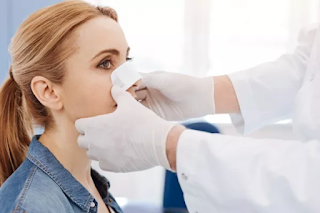Warts Removal
Strongest over-the-counter treatments Warts may be treatable with over-the-counter (OTC) remedies.
Warts may be effectively removed by applying a topical treatment containing 17%Trusted Source salicylic acid. It may take up to 12 weeks for this treatment to fully work.
Salicylic acid may be required in higher concentrations to treat larger warts. Before using high concentrations of salicylic acid to treat a wart at home, people should talk to their doctor.
Strongest medical and surgical treatments If OTC treatments fail to remove warts, patients may require medical or surgical treatment.
The following are some of the most effective medical and surgical treatments for warts:
Chemical peels A stronger salicylic acid solution may be prescribed by a physician to treat warts. Glycolic acid or tretinoin are two other options. The wart is removed layer by layer with these solutions.
Cryotherapy freezes and kills a wart with liquid nitrogen. Cryotherapy has been shown to successfully remove warts in 50-70% of cases after three to four treatments, according to research. Warts may be removed more quickly with cryotherapy than with salicylic acid.
CO2 laser A 60-person study conducted in 2018 compared CO2 laser and cryotherapy treatments for plantar warts. According to the findings of the study, it took an average of one CO2 laser session and three cryotherapy sessions to completely remove plantar warts.
Treatment options for common, filiform, and plantar warts include electrosurgery and curettage, according to the American Academy of Dermatology Association (AAD). Curette removes the wart while electrosurgery uses heat to burn it off.
Other effective methods for getting rid of warts include:
Bleomycin: A doctor injects bleomycin, an anti-cancer medication, into the wart. In the case of treating a wart on the finger, it may cause nail loss as a side effect.
Immunotherapy: The immune system is stimulated to fight warts by immunotherapy. The body is encouraged to fight HPV by applying diphencyprone or shots of interferon.
Cantharidin: A blister develops beneath the wart after a doctor applies cantharidin to it. The wart is then removed by the doctor.
Advertisement Tips for aftercare When treating a wart, the AAD suggests the following to speed up healing:
Cover the wart to keep the virus from getting to other people or other parts of the body. Wash your hands after touching or treating a wart. Don't shave over a wart or treatment area because doing so can spread the virus. Don't pick at or scratch a wart. If someone has surgery to get rid of a wart, they should follow their doctor's instructions on how to take care of it.
Will they come back?
Warts can reappear in the same spot or on a different part of the body. Treatment for warts only removes the wart, not the HPV that causes warts.
For more information visit Warts Removal In Islamabad
Warts may spread HPV-containing cells to the skin in the surrounding areas, resulting in additional wart growth. Immediately treating warts may assist in preventing this.
Tips for prevention Although HPV can easily spread, the following suggestions may be able to prevent warts:
Treat hyperhidrosis, a condition that causes excessive sweating, as moist skin is more susceptible to HPV get the HPV vaccine to protect against genital warts and genital cancers When to contact a doctor People need to see a doctor if they are unsure how to treat a wart or if they have:
Warts on the face or genitals, multiple or large warts, concerns that a wart may be another type of growth, itch, bleed, burn, or feel painful, and a weakened immune system are all potential causes of warts. It's possible that natural or over-the-counter treatments work. Wart removal may also necessitate medical intervention in other instances.




Comments
Post a Comment